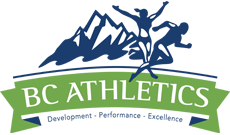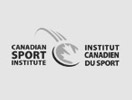The “new normal”: How athletes can adapt their nutrition
June 16, 2020 | by Kelsey Moore, Registered Dietitian, Fortius Sport & Health
What can you do to stay on top of your nutrition as an athlete during the “new normal”? Here are four nutrition tips to help with athletic performance during these times.
PROTEIN
Athletes are often well aware of the general role protein plays in their sport for muscle growth, repair and maintenance1. However, it is easy to lose sight of the importance of protein intake when it comes to amount, timing and quality of protein an athlete needs to consume.
While training may look different now, it is important to remember protein is still vital in helping maintain lean muscle mass, even if your type of training has changed or training capacity is reduced.
PROTEIN INTAKE & TIMING
First, let’s address protein amounts. The amount of protein an athlete needs depends on a few factors such as age and sport. Aim for a minimum of 20 grams or more of protein per meal to help maintain or increase lean muscle mass2.
It is not uncommon for athletes to consume much higher amounts at one meal (hello dinner). Why is this a problem? Typically, the body can only effectively utilize about 20-25 grams of protein per meal to maximize muscle protein synthesis (MPS)1,2 — the use of protein to repair muscles and accelerate muscle growth.
It is important to note that athletes with a higher body weight and high lean muscle mass may need more protein to reach peak MPS, so please check with a Registered Dietitian for your individual needs3.
If protein at one sitting is taken beyond what is needed for MPS, that protein is either used for energy or excreted as a waste product4.
Moral of the story: no need to overindulge on protein at a single meal!
How can you as an athlete ensure you are consuming the right amount of protein for your needs, at the right time? Timing matters.
Focus on getting an adequate amount of protein at each meal and spacing protein rich snacks throughout the day to help hit protein requirements for optimal athletic performance5. Ensure a recovery snack or meal is consumed 30-60 minutes post-training to help maximal protein uptake by lean tissues1.
Here are some examples of high-quality proteins to include:
- Skinless chicken breast
- Fish (salmon, trout, tuna, mackerel)
- Greek or Skyr yogurt
- Lentils
- Beans (black beans, chickpeas, edamame)
- Extra firm Tofu
- Tempeh (fermented soybean)
- Seitan (made from wheat gluten)
- Seeds (pumpkin, sunflower, hemp)
CARBOHYDRATES
With Keto diets currently all the rage, carbohydrates are becoming an increasingly underrated yet crucial source of energy for many athletes.
Carbohydrates are important for athletes as they provide a large source of energy pre-training and post-training and are needed to replace glycogen stores post-training1.
Research has shown that trained endurance athletes partaking in high intensity endurance events lasting longer than three hours require carbohydrate rich diets over a low carb ketogenic diet, in order to sustain intensity, even when keto adapted6.
For now, research supports the benefit of consuming a diet rich in complex carbohydrates for sport performance in high intensity sports1. Speak to a Registered Dietitian before attempting a ketogenic diet as it is easy to lack nutrients on this diet and may not be appropriate for you.
How many carbohydrates should an athlete be consuming for their sport? This depends on training type/amount. Given the “new normal” and altered training routines (i.e. less indoor training and/or more outdoor or cardio based training) you may need to tailor your carbohydrate intake by slightly decreasing or even increasing your intake. Talk to a Registered Dietitian to determine the right needs for you.
As with protein, quality of carbohydrates matters. Choosing complex sources of carbohydrates most often are going to help athletes fuel/and recover properly from a training session7.
Here are a few ways to include more complex carbohydrates in your meals:
- Replace store bought hash browns with a roasted homemade hash: Cubed yam or sweet potato as a base, add sautéed onions and garlic and spinach or kale for added nutrition.
- Add ancient grains to salad. Try ½ cup of cooked buckwheat, farro or quinoa (though technically a seed, quinoa contains amounts of complex carbohydrates similar to grains).
- Snacks: Have guacamole, black bean dips, cashew or chickpea-based dips with whole grain crackers or a whole wheat pita.
FIBRE
Let’s talk fibre! As an athlete, it’s common to focus on carbohydrates and protein for fuel and recovery for sport (which, as discussed, is important)! However, often little attention is given to the importance of fibre.
Not only is fibre important for general health (i.e., bowel regularity and chronic disease prevention) but new research is being done on fibre and the microbiome of athletes.
So why is fibre important for athletes and how does it affect performance? Let’s break it down, starting with probiotics.
Probiotics have been a buzzword in the media over the last few years, let’s go over a brief definition. Probiotics are the “good” bacteria that live along the lining of our guts and beneficially impact our health8. Some of these benefits include alleviating symptoms of lactose intolerance, risk reduction of certain diseases and improvements to gut health8.
Probiotics may be a term you are familiar with, but a word that is less talked about is prebiotics. So, what are prebiotics? Prebiotics are types of dietary fibre that act as an energy source for the naturally occurring good bacteria in our gut.
Why is maintaining healthy gut bacteria important for athletes? An altered gut microbiome can have a negative impact on immune function and energy metabolism, and play a role in oxidative stress—all of which are imperative for athletic performance and general health and wellness8.
With this, how do we best support our gut? Food first!
Probiotics are found in fermented foods (think kimchi, tempeh or live culture yogurts) so including those foods into your diet more regularly can be one step in supporting your gut.
The levels and types of probiotics in foods vary greatly and we are still learning about which probiotics are involved in various disease states specifically. Probiotic supplements may help to support specific chronic health conditions, but please reach out to a Registered Dietitian to see if they are right for you.
You might be wondering how this connects to fibre. By consuming prebiotics, we can support the good bacteria already living in our intestine. Prebiotics, can be found in fibre containing foods.
So, with more and more time spent at home, and perhaps cooking new recipes, let’s focus on adding more high fibre foods to our diet! Examples of foods high in prebiotics (dietary fibre) include:
- Onions
- Garlic
- Artichokes
- Asparagus
- Lentils
- Beans
- Bananas
- Beets
- Broccoli
It is important to note that fibre consumption in athletes can be tricky as the timing, amount and type of fibre can impair your sport performance if you experience digestive issues. Please speak to your healthcare provider and Registered Dietitian if you are experiencing any digestive discomfort that impacts your sport.
ALCOHOL
Recent BC news outlets have discussed the increased sales of alcohol in BC liquor stores. As we spend more time inside, it can be easier to reach for alcohol more often than normal.
Can alcohol have a negative impact on sport performance? Not surprisingly, yes. But, did you know impairments in performance can last up to 72 hours after consumption?!1
How does excessive alcohol consumption negatively impact sport performance? High consumption of alcohol is linked to slow reaction time, decreased jump height and grip strength, as well as increased time to fatigue during high intensity exercise1.
High alcohol consumption can also contribute to dehydration, which can be dangerous for athletes, especially if training at a high intensity or outdoors in hot climates where fluid losses through sweat can be high already1. Dehydration can lead to decreases in performance as well as serious health complications9.
Thus, limiting or avoiding alcohol consumption will have improvements on performance. If you are looking to swap your alcohol for another tasty beverage, here are a few refreshing, nutritious alternatives to alcohol:
- Live culture kombucha: Look for brands low in added sugars. The live cultures in kombucha need some sugars to feed on, however many kombuchas are high in added sugars. Look for brands that have ~5g or less of sugar per serving.
- Homemade non-alcoholic spritzer: 1 can carbonated water, ½ squeezed lemon, 4 strawberries chopped and muddled. Optional add 1-2 tsp. honey for added sweetness.
- Flavoured water: Add 10-15 muddled mint leaves to a jug of water and 1/3 chopped cucumber. Let sit over night to absorb the flavours and drink the next day!
BOOK NOW! BC ATHLETICS MEMBERS SAVE 10%!
Remember nutrition requirements can vary greatly for each individual. To learn about your individual needs or build a custom nutrition plan, book a virtual appointment with Fortius Sport & Health now! BC Athletics Members recieve 10% off Nutrition Assessments. Redeem Here. Visit our Sports Nutrition website page to learn more.
REFERENCES
- Karpinski, Christine, and Christine Rosenbloom. Sports Nutrition: a Handbook for Professionals. 6th ed. Chicago: Academy of Nutrition and Dietetics, 2017.
- Witard OC;Jackman SR;Breen L;Smith K;Selby A;Tipton KD; “Myofibrillar Muscle Protein Synthesis Rates Subsequent to a Meal in Response to Increasing Doses of Whey Protein at Rest and After Resistance Exercise.” The American journal of clinical nutrition. U.S. National Library of Medicine. Accessed June 3, 2020. https://pubmed.ncbi.nlm.nih.gov/24257722/.
- Macnaughton, Lindsay S, Sophie L Wardle, Oliver C Witard, Chris McGlory, D Lee Hamilton, Stewart Jeromson, Clare E Lawrence, Gareth A Wallis, and Kevin D Tipton. “The Response of Muscle Protein Synthesis Following Whole-Body Resistance Exercise Is Greater Following 40 g than 20 g of Ingested Whey Protein.” Physiological reports. John Wiley and Sons Inc., August 2016. https://www.ncbi.nlm.nih.gov/pmc/articles/PMC4985555/.
- Schoenfeld, Brad Jon, and Alan Albert Aragon. “How Much Protein Can the Body Use in a Single Meal for Muscle-Building? Implications for Daily Protein Distribution.” Journal of the International Society of Sports Nutrition. BioMed Central, February 27, 2018. https://www.ncbi.nlm.nih.gov/pmc/articles/PMC5828430/.
- Morton, Robert W, Chris McGlory, and Stuart M Phillips. “Nutritional Interventions to Augment Resistance Training-Induced Skeletal Muscle Hypertrophy.” Frontiers in physiology. Frontiers Media S.A., September 3, 2015. https://www.ncbi.nlm.nih.gov/pmc/articles/PMC4558471/.
- McSwiney, Fionn T, Lorna Doyle, Daniel J Plews, and Caryn Zinn. “Impact Of Ketogenic Diet On Athletes: Current Insights.” Open access journal of sports medicine. Dove, November 15, 2019. https://www.ncbi.nlm.nih.gov/pmc/articles/PMC6863116/.
- Kanter, Mitch. “High-Quality Carbohydrates and Physical Performance: Expert Panel Report.” Nutrition today. Lippincott Williams & Wilkins, January 2018. https://www.ncbi.nlm.nih.gov/pmc/articles/PMC5794245/.
- Wosinska, Laura, Paul D Cotter, Orla O’Sullivan, and Caitriona Guinane. “The Potential Impact of Probiotics on the Gut Microbiome of Athletes.” Nutrients. MDPI, September 21, 2019. https://www.ncbi.nlm.nih.gov/pmc/articles/PMC6835687/.
- Vella, Luke D, and David Cameron-Smith. “Alcohol, Athletic Performance and Recovery.” Nutrients. MDPI, August 2010. https://www.ncbi.nlm.nih.gov/pmc/articles/PMC3257708/.







